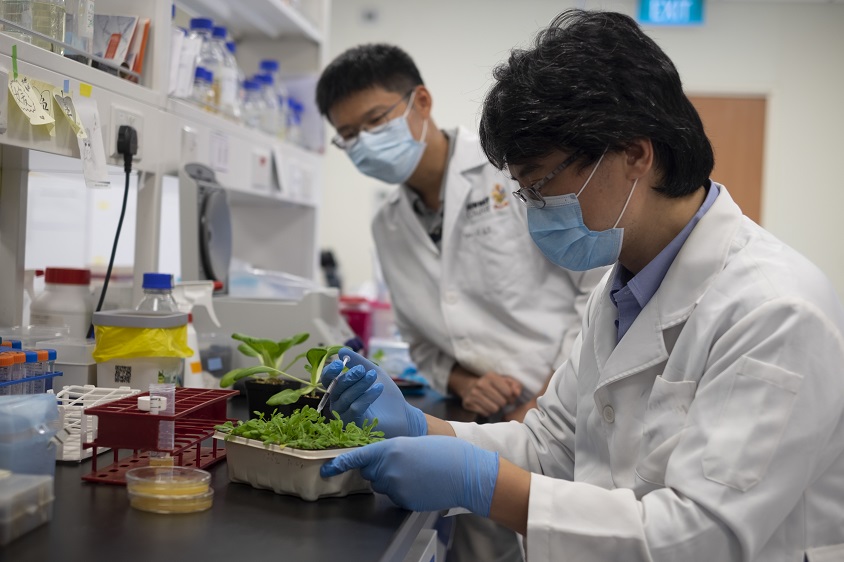
An interdisciplinary team of scientists from Nanyang Technological University, Singapore (NTU Singapore) has identified, for the first time, a key mechanism by which a dangerous plant disease can infect crops.
The Xanthomonas bacteria, known as the "crop killer", is a globally prevalent bacterium capable of infecting 400 different plant species. It causes bacterial spots and blights in the leaves and fruits of the plants it infects. In some cases, once the disease takes root, a farmer's only recourse is to cut down and burn the entire crop of plants to stem the spread of disease.
The NTU researchers identified the exact cellular-level mechanism by which the bacteria can penetrate and hijack a plant's immune system, therefore leaving them vulnerable to infection.
The Xanthomonas bacteria infects and damages plants by injecting toxic proteins into the plant host. These proteins hijack and take over the plant's normal biological processes, preventing them from mounting an immune response.
The research team discovered that the toxic proteins interacts with plant cells like liquid droplets, allowing the bacteria protein to "glue" onto the plant cell and merge into it. This lets the Xanthomonas bacteria infiltrate and invade the plant cell, leaving it vulnerable to infection.
Understanding exactly how plants and crops are infected by bacteria is a crucial step in developing methods to prevent their infection and produce crops that can resist the disease.
The team has obtained a provisional patent for a toolkit they have developed that allows scientists to replicate the infection process. This will allow researchers to test potential solutions for strengthening crop immunity in laboratory settings. It also has potential applications for future synthetic biology and agri-food technology.






